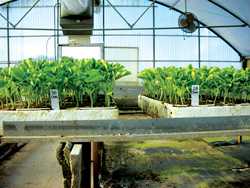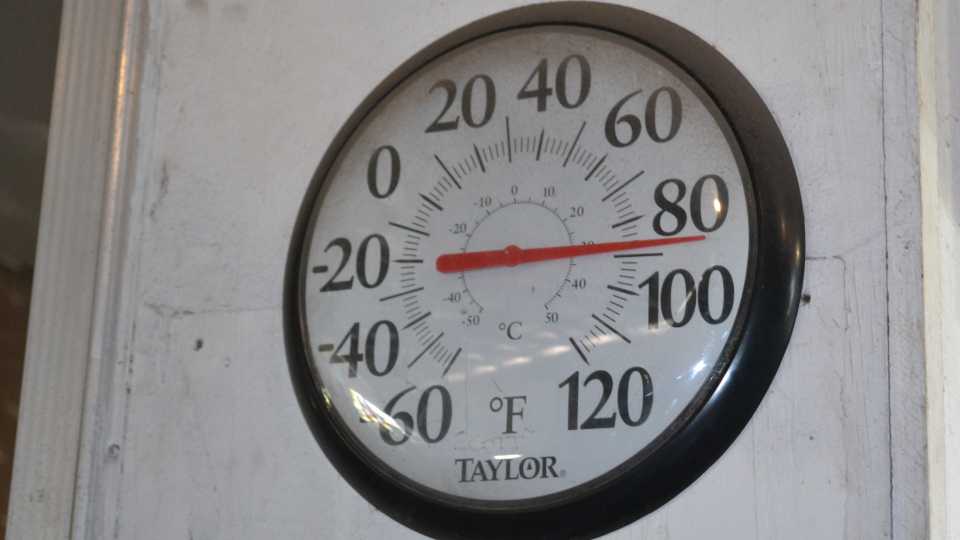Tips to Ease Transplant Shock

Growers of a wide variety of vegetable crops are increasingly moving away from direct seeding to using transplants in part to get more uniform stands and increased yields. However, in many parts of the country, the transition from a cozy greenhouse to a hot, wind-swept field with rapidly drying soils can be tough on the young plants.
Daniel Leskovar, a plant physiologist at the Texas AgriLife Research and Extension Center in Uvalde, has been investigating ways to help vegetable plants make a less stressful transition from the greenhouse to the field, reducing transplant shock.
“This research can aid in the successful production and possibly even the further profitability of some vegetable crops by producing high-quality, more adaptive plants that will establish well,” Leskovar says. “It could also enable some vegetable plants to produce beyond their regular season or succeed within a stressful growing environment.”
Peppers, Tomatoes Benefit
An expert in vegetable physiology, Leskovar said his research has been “centered in the identification and understanding of plant adaptation mechanisms to temperature, water, and biological stresses as part of an integrated vegetable cropping system.” He and his collaborators already have been successful in creating heartier pepper, tomato, watermelon, and cantaloupe seedlings for transplantation.
Leskovar has been joined in his research efforts by other AgriLife Research personnel, including researchers from the Texas AgriLife Research and Extension Centers in Weslaco and Amarillo, and a researcher from the Institute for Adriatic Crops in Croatia.
The key to their research is the use of abscisic acid, or ABA, which is a hormone naturally produced by the plant. The plant always has ABA present in the leaves, moving from roots to shoots, but it produces more ABA in certain situations. “It’s an intriguing hormone, a stress hormone,” says Leskovar. “The plants synthesize it in reaction to stress, regulating the closing and opening of stomates. So if they encounter high stress, they close the stomates.”
Southern Stressing
In south Texas where Leskovar is located, as well as in many areas in the southern U.S., there are several common stressors, namely higher temperatures and drought events coupled with high winds. Well-watered plants come from the shelter of the greenhouse to a high-stress environment, with predictable results. “You get delayed growth, wilting, and some mortality. It’s a common problem,” he says. “But even in cool climates you can have stress, especially if there are high winds, which aren’t unusual in the spring.”
Leskovar and colleagues are trying to improve transplant quality by developing plants that are more acclimated to drought stress. That means plants that are more compact, tougher. To do that they need to suppress growth to avoid producing gangly plants. Years ago, transplant producers could use certain chemicals to suppress growth, such as daminozide (Alar). But that product was pulled from the market after a scare set off by a segment on the TV show “60 Minutes” in 1989. That scare was determined to be unfounded, but the damage was done, and today Leskovar says transplant producers don’t have many ways of suppressing growth.
As an alternative to suppressing growth, researchers have looked into protecting the plants from the shock of moving from greenhouse to field. The theory is that if you have already a good, quality plant, you can prevent the plant from getting stress through the use of coatings. But Leskovar says he has experimented with many coatings, or antitranspirants, and while he did see improvement, they didn’t work as well as ABA.
Questions Remain
What makes ABA so promising, says Leskovar, is that it doesn’t work as a simple coating, but actually changes the plant’s physiology. The changes are temporary, he said, as the transplants quickly recovered their water potential, stomatal efficiency, and photosynthetic rates. In sum, they completely resumed normal growth patterns after a short period of water stress in response to the external application of the hormone.
As for increasing yields, Leskovar says that needs further research, and more trials are under way. He added that the work he and his fellow researchers have been doing has been supported through the interest of the industry and cooperation with commercial greenhouses in the Rio Grande Valley and Florida.
“We have trials in right there, though the data on that is not very large,” he says. “But we know we can increase marketable yields. If every plant you put in the field produces as uniformly as possible, we could see potentially significant increases in yields.”
Another area that needs more study regards application, i.e. the proper rate of hormone and proper time. For instance, researchers don’t know whether the final application should be three days before transplanting, or one or two weeks. Further complicating matters is that Leskovar believes the times and rates of application will be crop-dependent, so they are now studying the effects on various cultivars.
A commercial product with synthesized ABA for foliar application could be available as soon as next year, says Leskovar. “That’s in the discussion, but we need to be very sure if effects are just temporary or are lasting,” he says. “We must convince nurseries as well as growers, and we have some research being done in commercial nurseries.”









